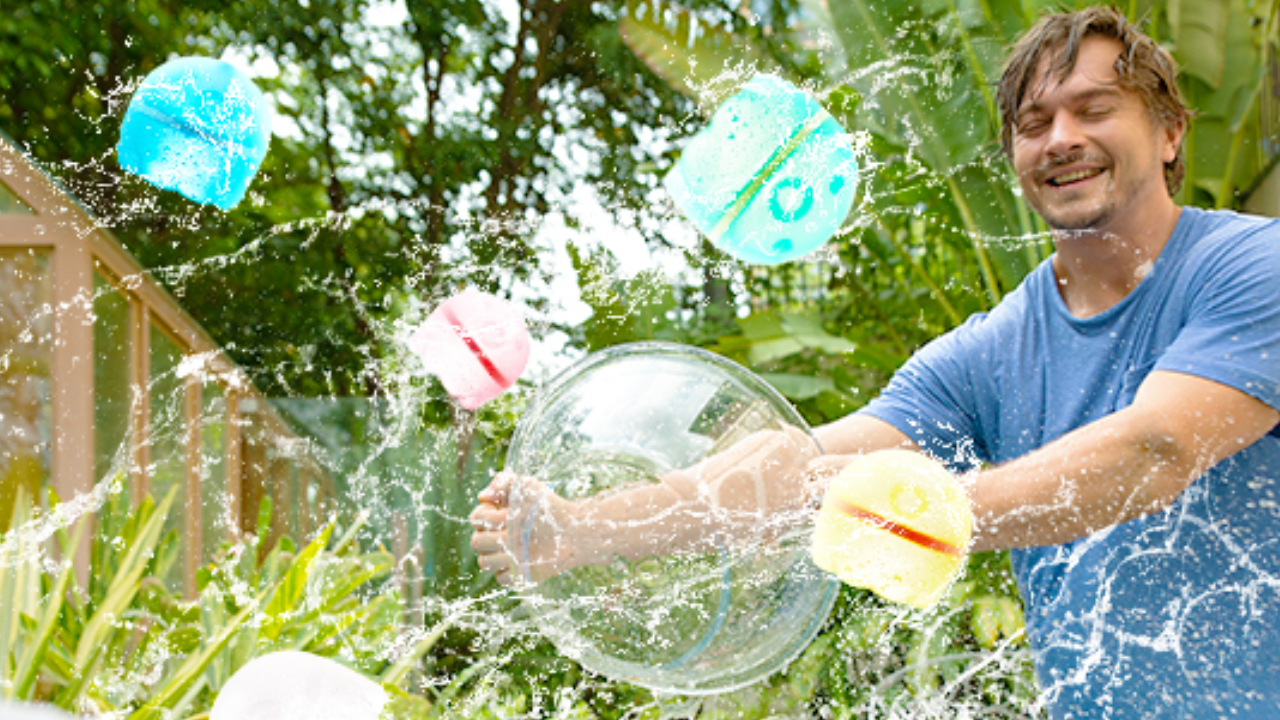The joyful splash of reusable water balloons evokes not only pleasure but also a need to prioritize safety. As these eco-friendly options gain popularity, recognizing and adhering to safety precautions becomes critical for a safe and enjoyable water play experience. Safety concerns are critical to ensuring that pleasure remains joyful and free of accidents or injuries. The materials used for reusable water balloons, whether silicone or fabric-based, must be carefully considered to ensure safe handling.
From age-appropriate use to proper filling and tying practices, each step in the process is critical to avoiding potential hazards. Recognizing the dynamic nature of Hiliop water balloons, younger users require supervision. By delving into the complexities of safety issues, users embark on a journey in which the joy of water balloon play blends perfectly with a commitment to well-being, providing all participants with a refreshing and secure outdoor experience.
Are They Easy To Clean?
Reusable water balloons are meant to be easily cleaned. Most may be cleaned with water and mild soap after use. Some are also dishwasher-safe for extra convenience. Proper cleaning not only assures sanitary play but also increases the balloons’ lifespan, allowing for several uses. This user-friendly feature increases the overall attractiveness of reusable water balloons as a convenient and environmentally beneficial solution for water play.
Essential Safety Considerations When Using Reusable Water Balloons
As the popularity of reusable water balloons spreads, providing eco-friendly joy to outdoor water play, it is critical to prioritize safety alongside fun. While these sustainable options provide a more environmentally responsible twist on typical water balloon games, it is critical to understand and adhere to safety precautions. This article delves into the critical safety rules to ensure that the enjoyment of using reusable water balloons is accompanied by a dedication to well-being.
Material Safety and Selection
When employing reusable water balloons, material safety and selection come first. Understanding the qualities of the chosen material, whether silicone or fabric-based, is critical for safe use. Make sure the balloons you choose are made of non-toxic materials and that you always follow the manufacturer’s instructions. By prioritizing material safety, consumers may enjoy the eco-friendly benefits of reusable water balloons while remaining safe.
Age-Appropriate Use
When using reusable water balloons, it is vital to consider the age of the user. Always follow the manufacturer’s recommended age groups. Constant supervision is required, particularly for smaller children, to avoid overuse and guarantee a safe water play experience. Adhering to age requirements encourages responsible use, reduces potential dangers, and improves overall safety when using reusable water balloons.
Supervision for Younger Users
Younger users require supervision to play safely with reusable water balloons. While these environmentally friendly alternatives are developed with safety in mind, regular monitoring ensures that younger children use them properly. Responsible supervision decreases the likelihood of unintentional abuse, ingestion, or other possible risks, resulting in a safe and pleasurable water balloon experience for the youngest players.
Filling and Tying Safety
When utilizing reusable water balloons, it is critical to ensure that they are filled and tied safely. Follow approved filling practices to avoid overfilling or underfilling, since both represent possible safety hazards. To avoid leaks or spills during play, ensure that the balloons are securely tied. Adhering to proper filling and tying techniques offers a safe and fun water balloon experience while reducing the chance of accidents and injury.
Allergen Awareness
Allergen awareness is essential for safety when using reusable water balloons. Consider potential material allergies and, if necessary, choose hypoallergenic balloons. Furthermore, evaluate any dyes used in the balloons, and choose items with clear labeling on safe dyes. By being aware of potential allergens, consumers can have a safe and enjoyable time with reusable water balloons.
Cleanup and Maintenance
Cleanup and maintenance are critical safety issues when using reusable water balloons. After each usage, properly clean the balloons with water and mild soap or according to the manufacturer’s recommendations. Proper cleaning promotes hygienic play and increases the life of balloons. Store them in a cool, dry location away from severe temperatures. Users can help ensure a safe and fun water balloon experience by prioritizing cleanup and maintenance.
Final Words
Reusable water balloons provide an eco-friendly and sustainable alternative to traditional water play, but safety precautions must be taken alongside the fun. Individuals can enjoy the refreshing enjoyment of reusable water balloons while developing a responsible play culture by focusing on material safety, age-appropriate use, proper filling and tying procedures, and environmental awareness. Remember that the secret to a good water balloon experience is to combine the pleasure of the splash with a commitment to all participants’ safety.
